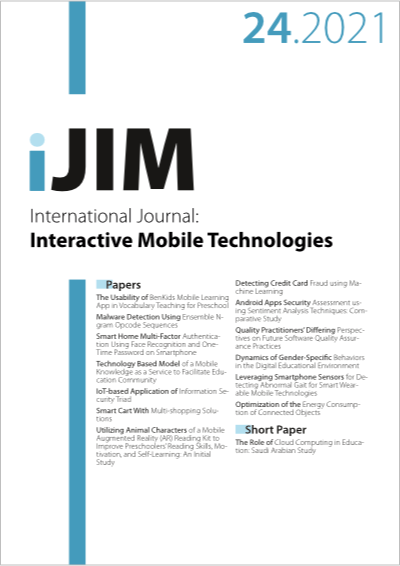Utilizing Animal Characters of a Mobile Augmented Reality (AR) Reading Kit to Improve Preschoolers’ Reading Skills, Motivation, and Self-Learning: An Initial Study
DOI:
https://doi.org/10.3991/ijim.v15i24.26673Keywords:
Mobile augmented reality, motivation, preschool students, reading skills, self-learning.Abstract
This study developed and used a mobile Augmented Reality (AR) reading kit to help preschool students recognize alphabets and read simple words more effectively. This study was based on the quantitative approach involving an experimental methodology that used a one-group pretest-posttest design. In this study, the variables of interest to be measured were students’ reading skills, motivation, and self-learning. The learning treatment involved a series of reading sessions using the novel learning application that spanned three weeks, with each session lasting for two hours. The sample of this study comprised 60 preschool students, whose ages ranged from four to six, who were selected from three different preschools. The effectiveness of the novel-reading kit was evaluated in terms of students’ learning performance, learning motivation in reading, and self-learning. The data for the former were gathered from pre-testing and post-testing. At the same time, a survey was administered to the students to elicit their opinions and feedback on the last two factors. Furthermore, all descriptive and inferential statistical procedures have been selected to analyze the data. Specifically, a one-way analysis of variance (ANOVA) was applied to analyze the data, which demonstrated significant differences in the students’ reading skills, motivation, and self-learning before and after the learning interventions. These findings showed the students could recognize alphabets more accurately, read simple words more intelligently, become more motivated to read and be highly engaged in self-learning using the mobile AR reading kit.
Downloads
Published
How to Cite
Issue
Section
License
Copyright (c) 2021 HAFIZUL FAHRI BIN HANAFI

This work is licensed under a Creative Commons Attribution 4.0 International License.


